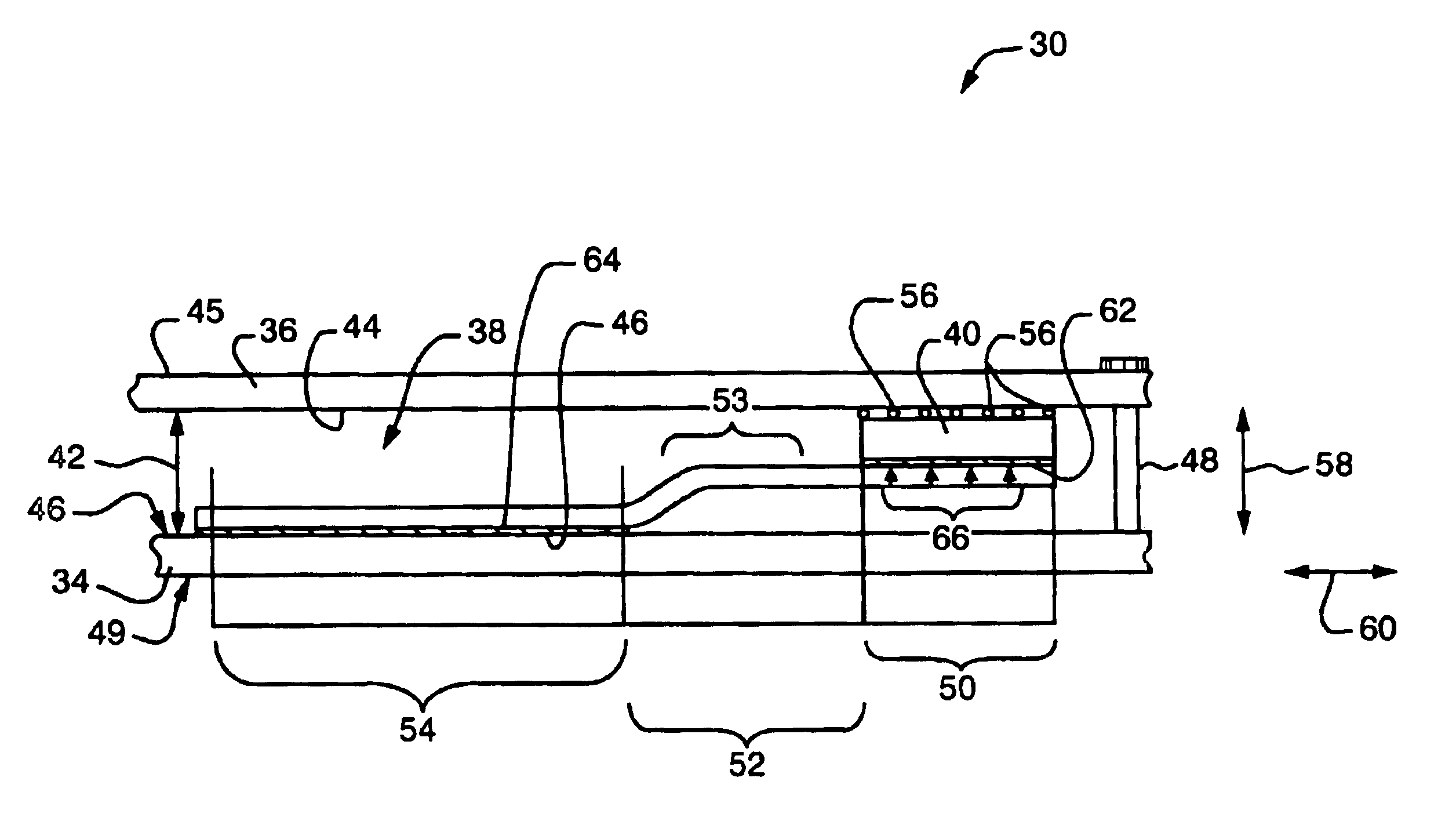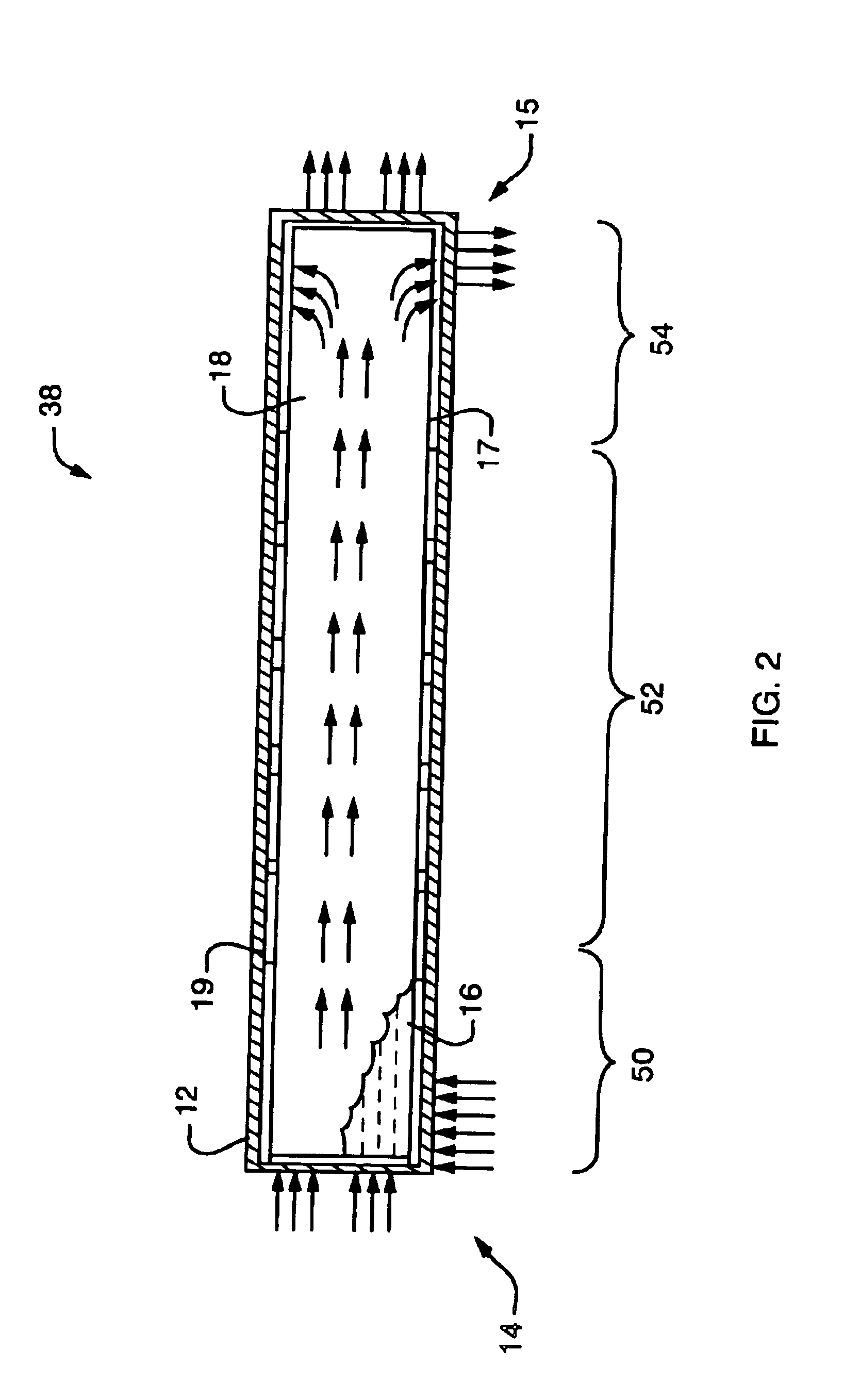Methods and apparatus for cooling a circuit board component using a heat pipe assembly
- Summary
- Abstract
- Description
- Claims
- Application Information
AI Technical Summary
Benefits of technology
Problems solved by technology
Method used
Image
Examples
Embodiment Construction
[0027]Embodiments improve upon the heat sinks of the prior art and provide mechanisms for cooling a circuit board component mounted to a circuit board. A circuit board assembly has a circuit board coupled to a support plane and defining a space between the circuit board and the support member. A circuit board component mounts to the circuit board and is oriented within the space defined by the circuit board and the support plane. A heat pipe assembly, located within the defined space, has a relatively high thermal conductivity, compared to other thermally conductive materials, and transfers heat from the circuit board component to the support plane or carrier tray associated with the circuit board. The heat pipe assembly has an input portion that contacts the circuit board component and an output portion that contacts the support plane. The heat pipe assembly also has a compliant portion having a lower stiffness relative to the stiffness of either the input portion or the output por...
PUM
 Login to View More
Login to View More Abstract
Description
Claims
Application Information
 Login to View More
Login to View More - R&D
- Intellectual Property
- Life Sciences
- Materials
- Tech Scout
- Unparalleled Data Quality
- Higher Quality Content
- 60% Fewer Hallucinations
Browse by: Latest US Patents, China's latest patents, Technical Efficacy Thesaurus, Application Domain, Technology Topic, Popular Technical Reports.
© 2025 PatSnap. All rights reserved.Legal|Privacy policy|Modern Slavery Act Transparency Statement|Sitemap|About US| Contact US: help@patsnap.com



